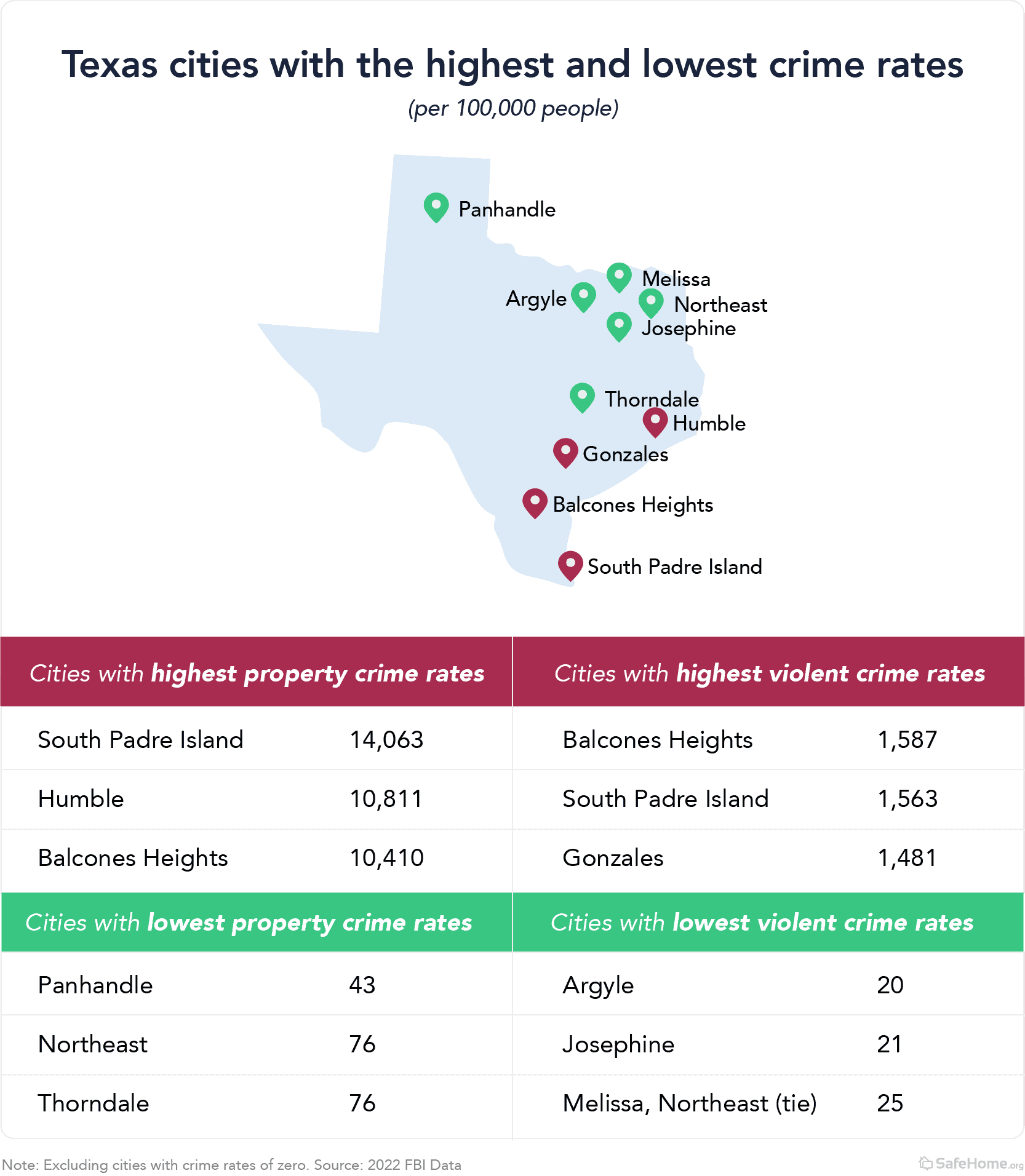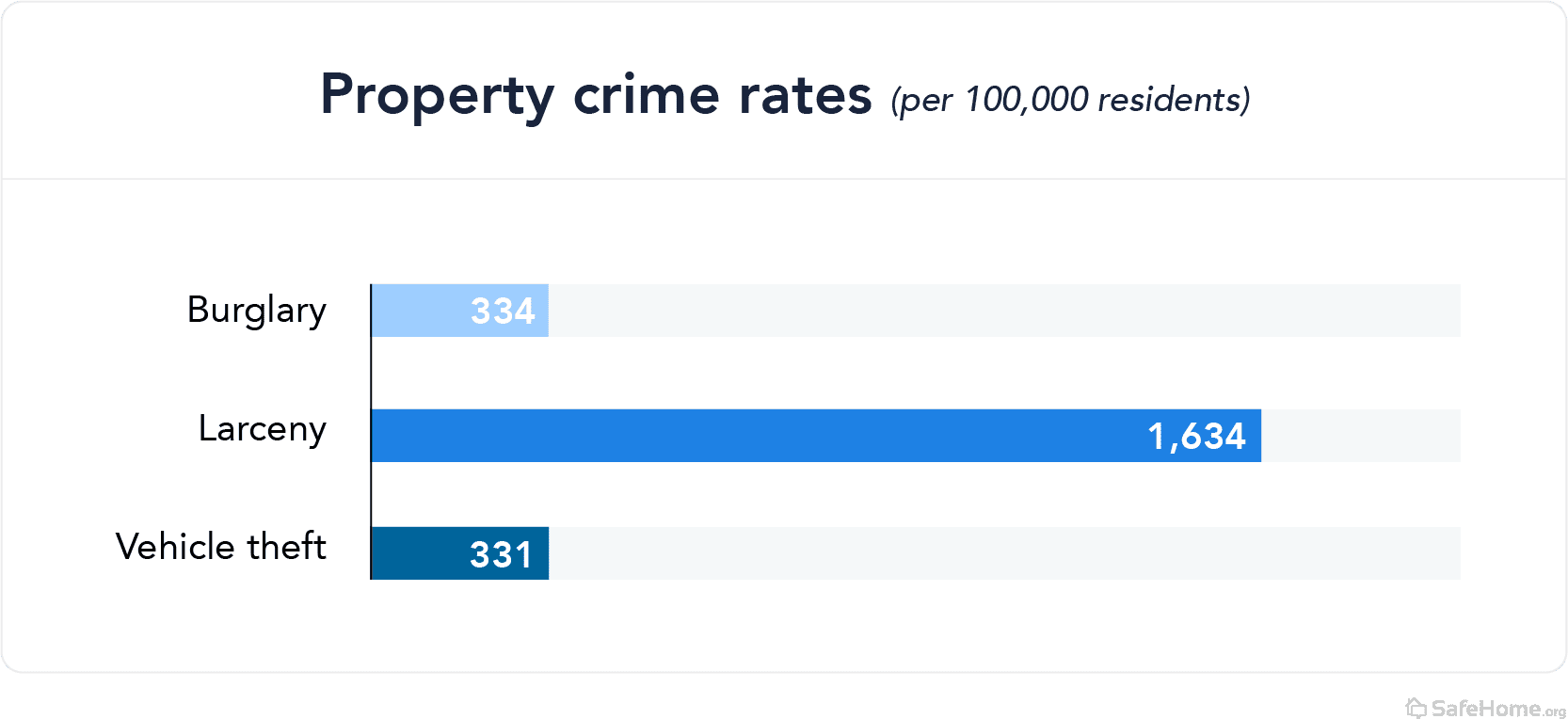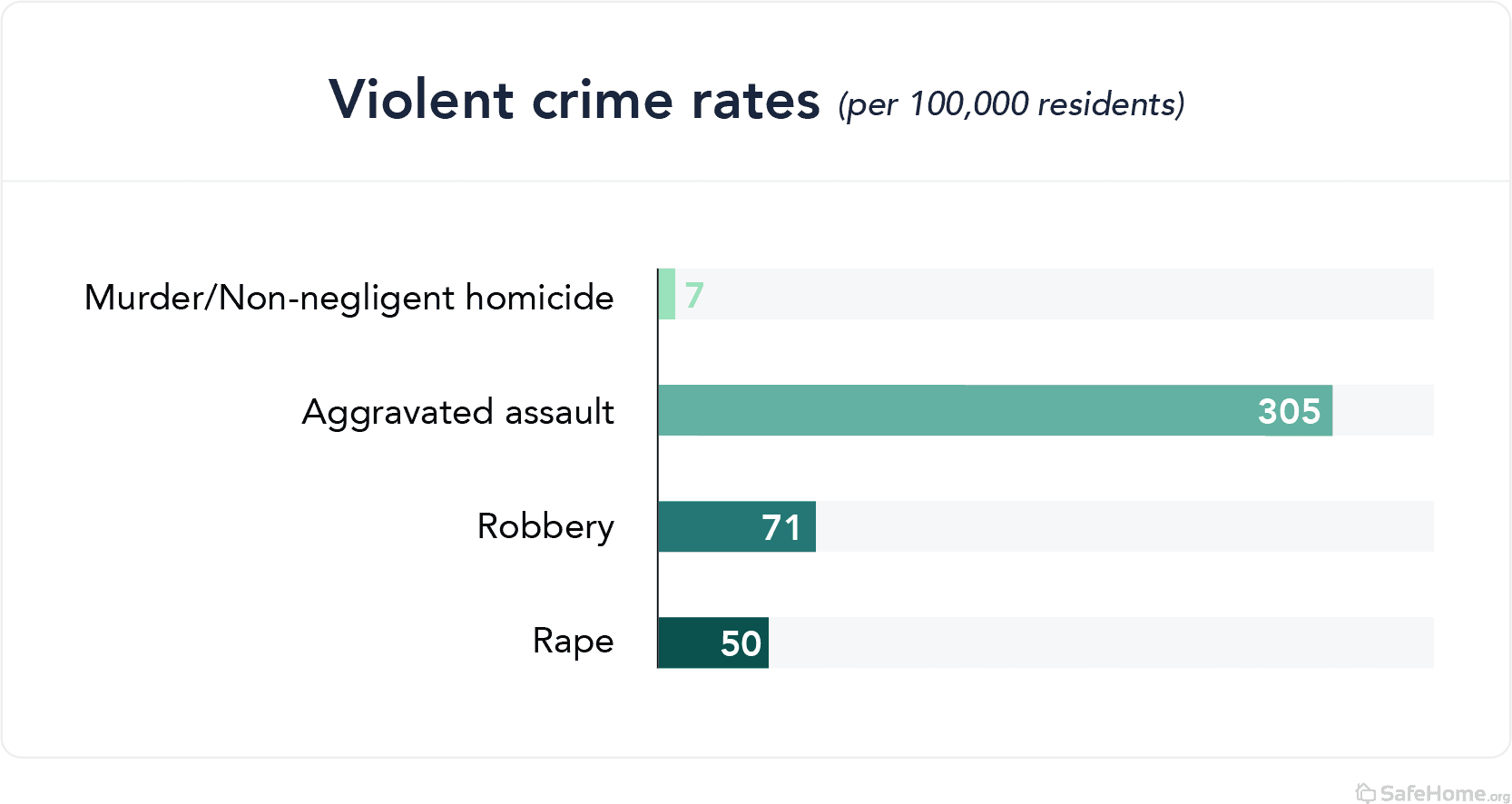The Most Safest and Dangerous Cities in Texas

Despite being one of the safest states overall, Texas has higher violent crime and property rates than the national average because certain areas report much higher rates of these crimes.
Texas is famous for its independence, being the largest state by land mass in the Lower 48, and for cowboys and NASA mission control in Houston.
Its fast-growing economy across multiple sectors, along with its Texas BBQ and pecan pie, attract many young Americans to the Lone Star State to build their careers and raise their families. Personal and property safety are important considerations for residents.
Popular cities for newcomers include Tyler, Laredo, and New Braunfels, according to USA Today.

But how do these cities rank for crime in Texas?
Austin’s violent crime rate is near the middle of the top of the range of Texas cities, with 540 violent crimes reported per 100,000 annually. Laredo and El Paso rank near the middle of the entire list of Texas cities for violent crime, with 317 and 313 of these kinds of crimes reported per 100,000 each year.
New Braunfels ranks lower on the list among the safer cities in Texas in which to move to and live, with 188 violent crimes committed per 100,000, according to the FBI uniform crime data.
Here are some more statewide crime trends in Texas.
Statewide Crime Trends in Texas
Texas cities overall don't have a higher violent crime rate than the state average for California and Alaska, but the Lone Star state's violent crime rate of 432 per 100,000 residents annually is higher than the national average of 381 per 100,000 people.
As a result, Texas ranks 12th for violent crime among the 50 U.S. states. Meanwhile, with a property crime rate of 2,300 per 100,000 residents per year, Texas ranks 14th for property crimes in the United States.
But crime does seem to be improving in some areas of Texas in 2024. In Austin, for example, new statistics recently revealed crime levels decreased in the first quarter of 2024 for the first time since 2020. This suggests the social ecosystem is beginning to heal from the pandemic’s disruptions.
Property Crime in Texas
Texas residents and visitors, especially those living or staying in certain cities, may want to take extra precautions for personal safety and home security.

The burglary rate statewide is 334 per 100K, while the larceny-theft rate is 1,634, and the motor vehicle theft rate is 331.
The least safest cities in Texas for property crime are South Padre Island (14,063 per 100K), Humble (10,811 per 100K), and Balcones Heights (10,410 per 100K). The safest cities in Texas for property crime are Collinsville, Edgewood, Stratford, Hico, and Woodbranch (0 per 100K).
Violent Crime in Texas
Violent crime in Texas ranks the state 12th nationwide, with a violent crime rate of 432 per 100K annually, which is 13 percent higher than the national average.

The most violent cities in Texas are Balcones Heights (1,587 violent crimes reported per 100K people per year), South Padre Island (1,563), and Gonzales (1,481). The least violent cities in Texas are Argyle, Josephine, Melissa, and Northeast.
Our Data
Our data comes from comprehensive reporting compiled by the FBI and accessed via the Crime Data Explorer website. Property and violent crime state figures were drawn from Table 5 of the 2022 Crime in the U.S. Report. Metropolitan figures were found in Table 6, Crime in the U.S. by Metropolitan Statistical Area. City-level figures were drawn from Table 8, Offenses Known to Law Enforcement by State by City. The population figures in that table are U.S. Census Bureau provisional estimates as of July 1, 2020.
Limitations: According to the FBI, the data in the publication tables may differ from those released on the Explorer Pages of the CDE. These variations are due to the difference in methodologies between the publication tables and data displayed on the CDE. Please note that crime statistics are not the sole measure of a city’s safety.
Navigate Crime Data by State
- Alabama
- Alaska
- Arizona
- Arkansas
- California
- Colorado
- Connecticut
- Delaware
- Florida
- Georgia
- Hawaii
- Idaho
- Illinois
- Indiana
- Iowa
- Kansas
- Kentucky
- Louisiana
- Maine
- Maryland
- Massachusetts
- Michigan
- Minnesota
- Mississippi
- Missouri
- Montana
- Nebraska
- Nevada
- New Hampshire
- New Jersey
- New Mexico
- New York
- North Carolina
- North Dakota
- Ohio
- Oklahoma
- Oregon
- Pennsylvania
- Rhode Island
- South Carolina
- South Dakota
- Tennessee
- Utah
- Vermont
- Virginia
- Washington
- West Virginia
- Wisconsin
- Wyoming
